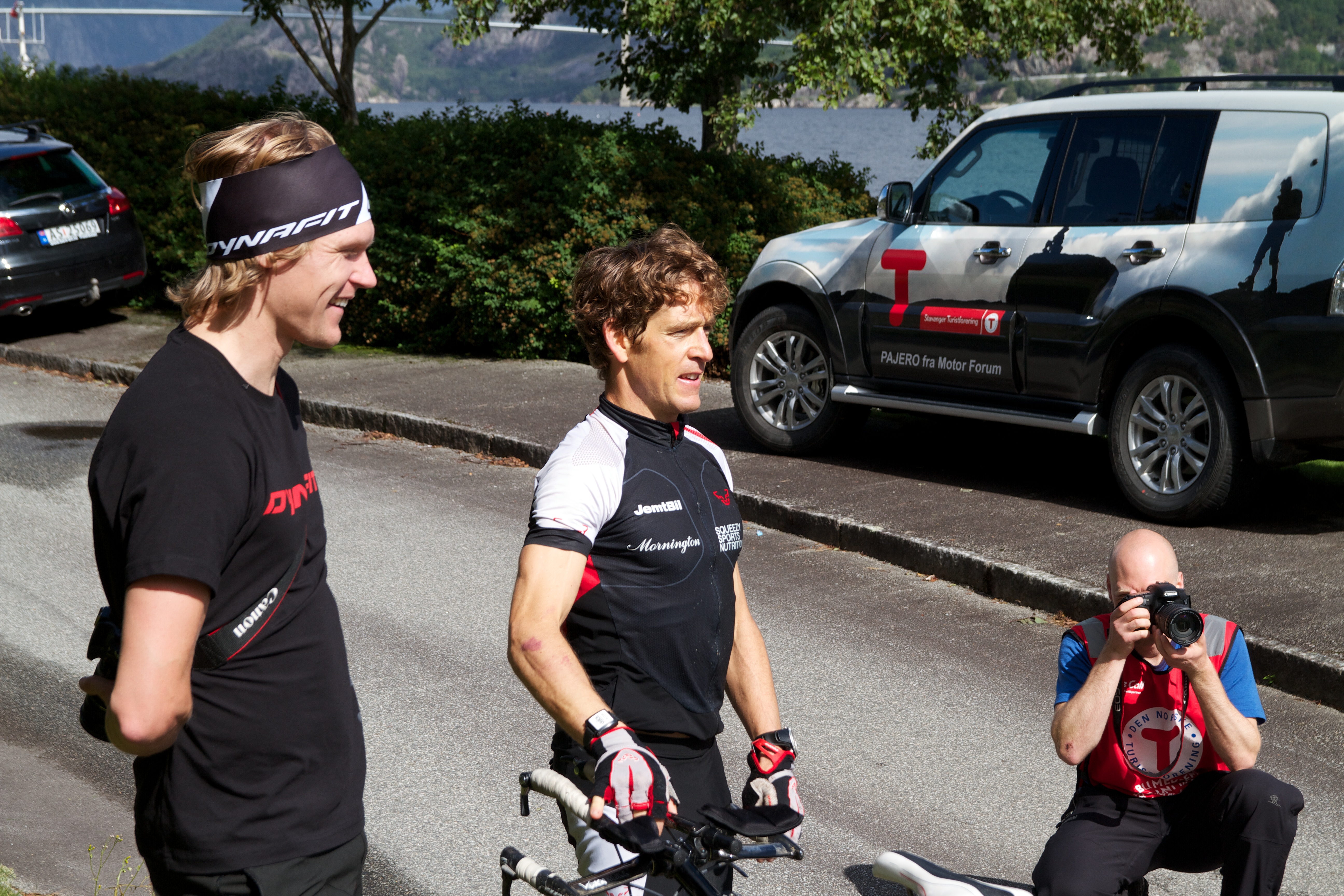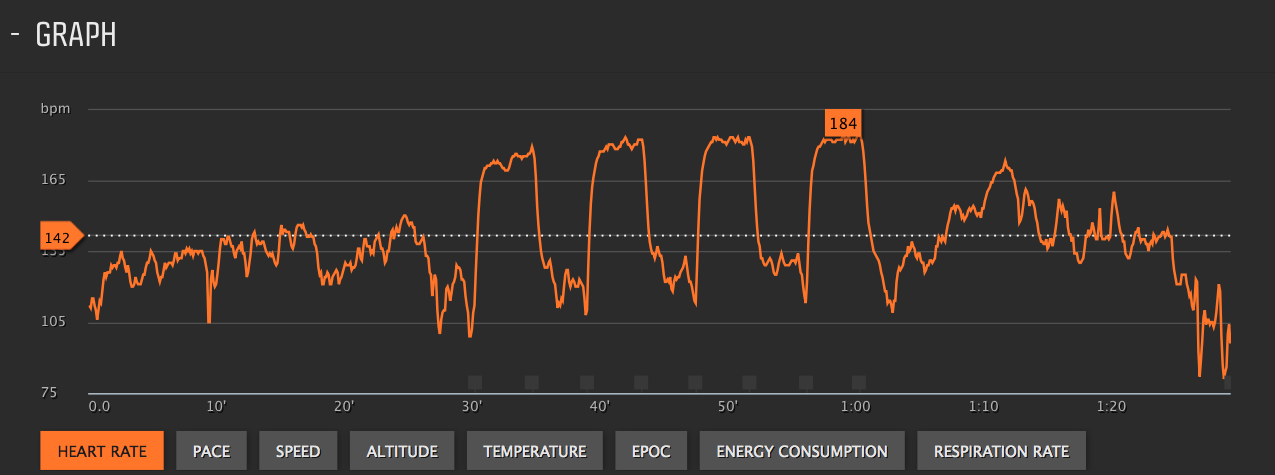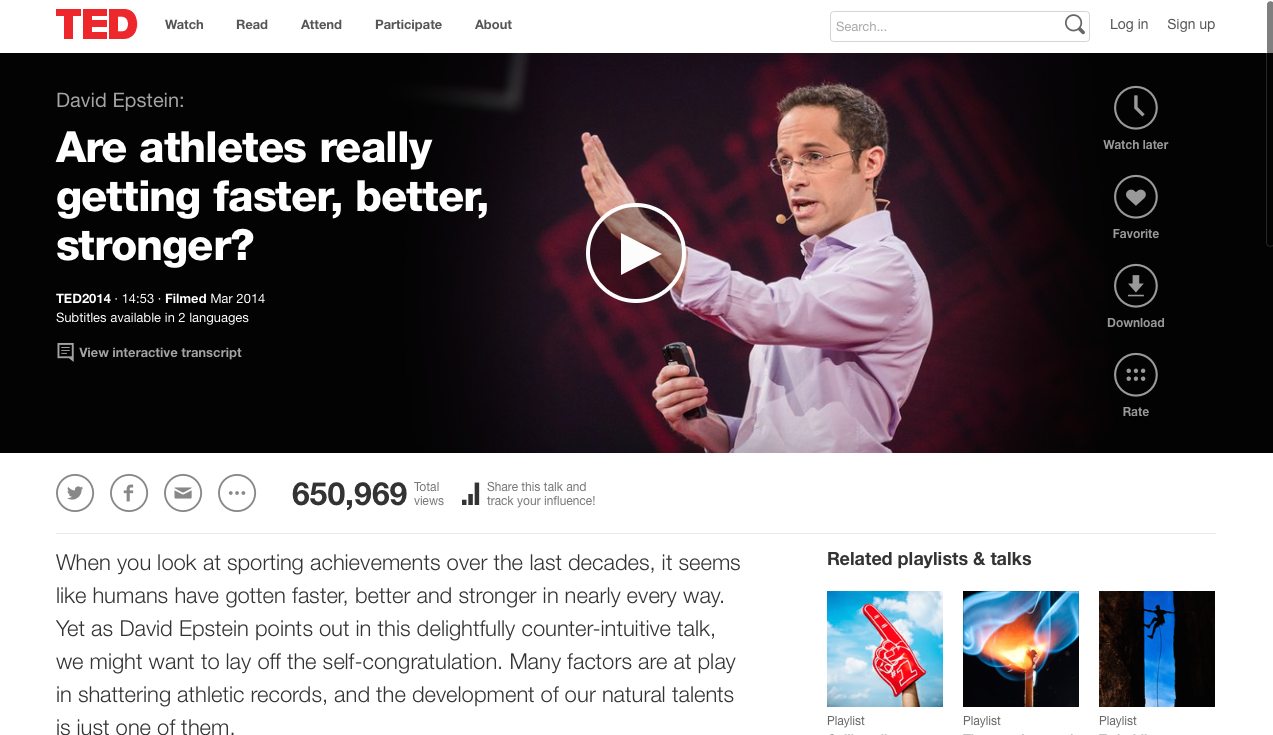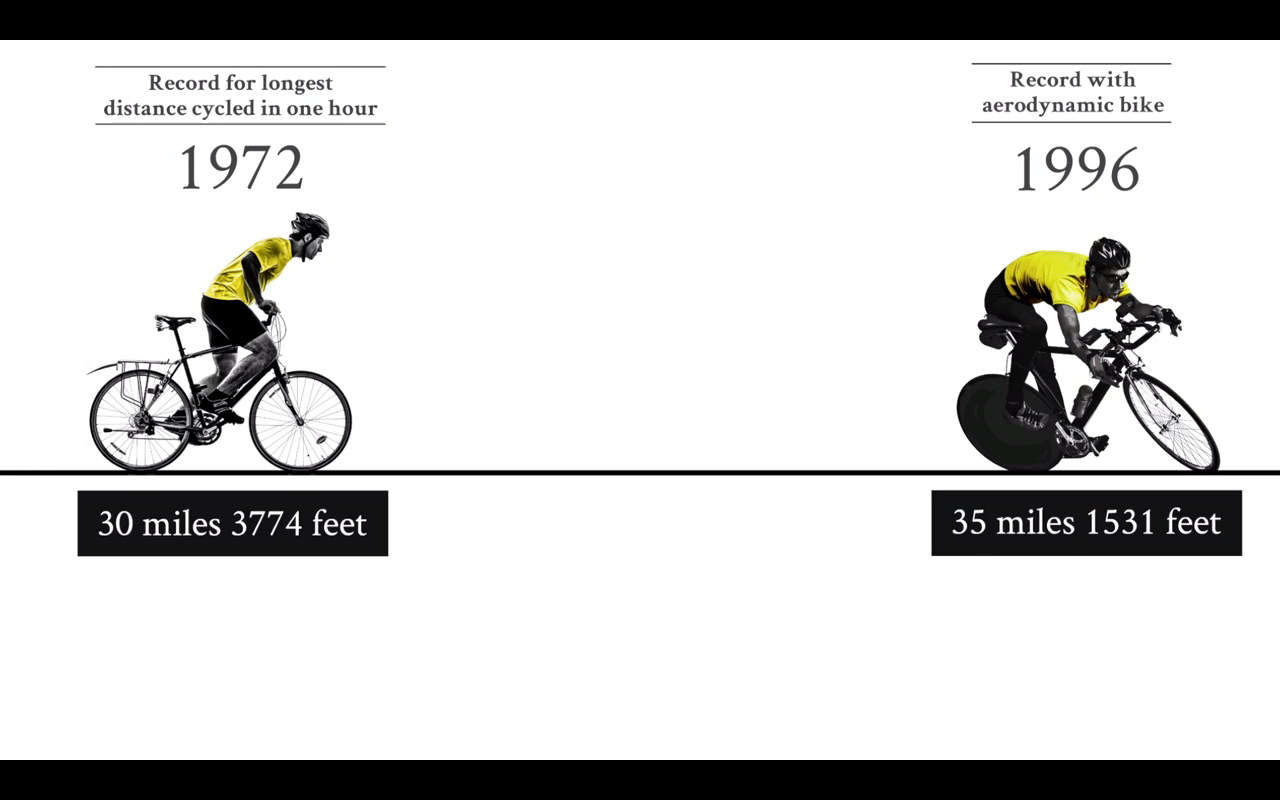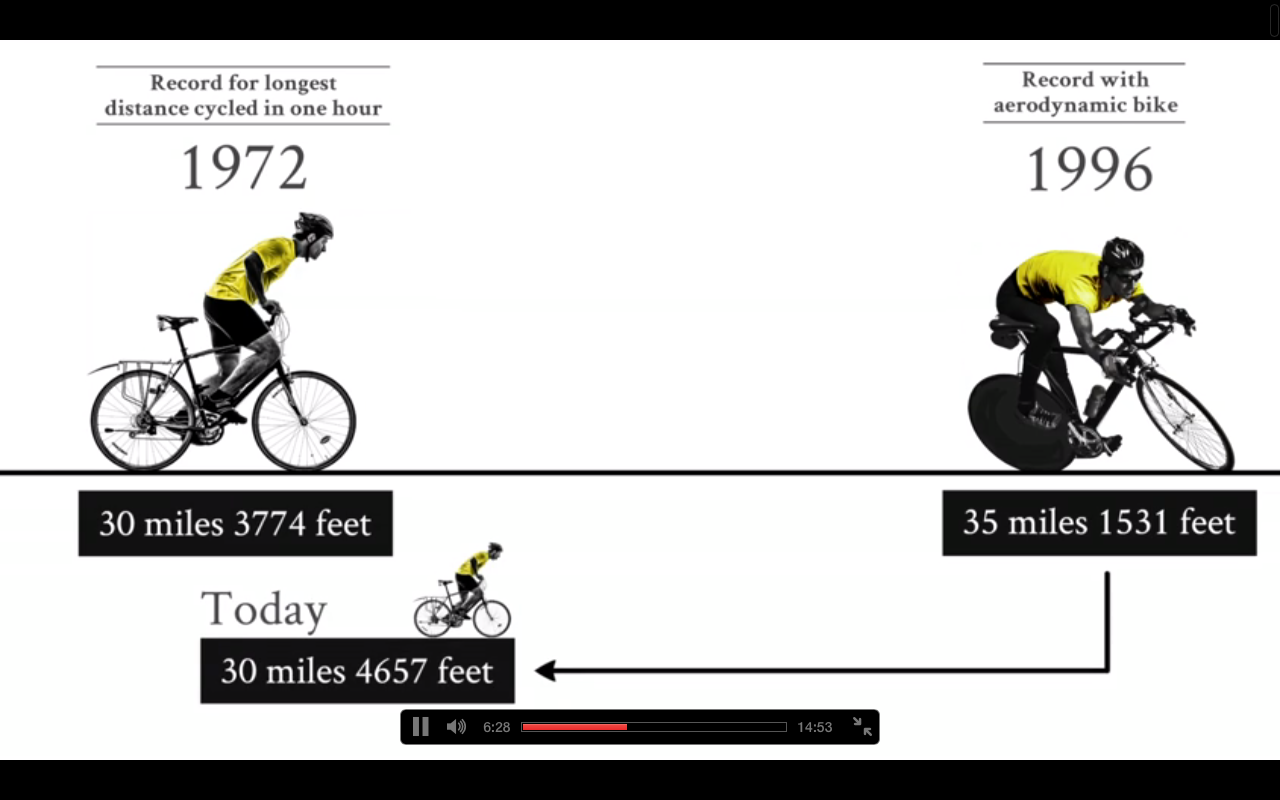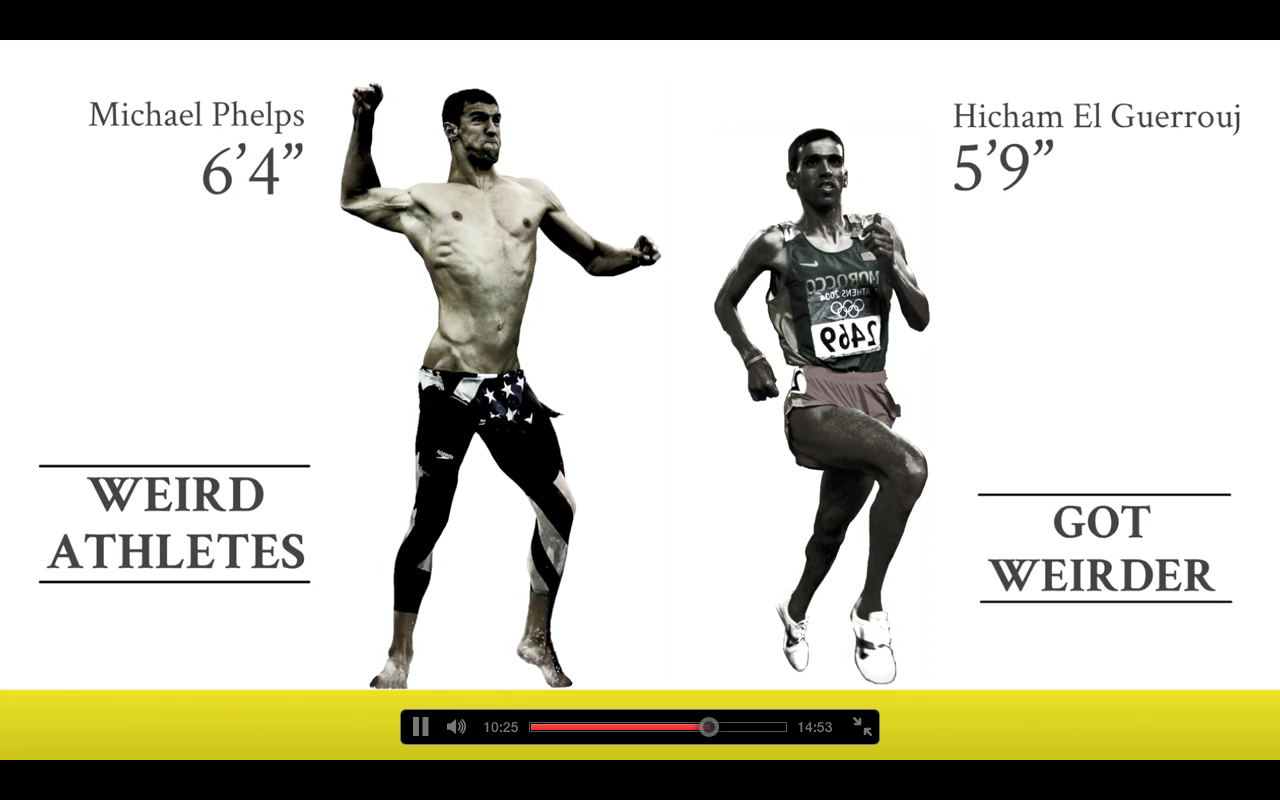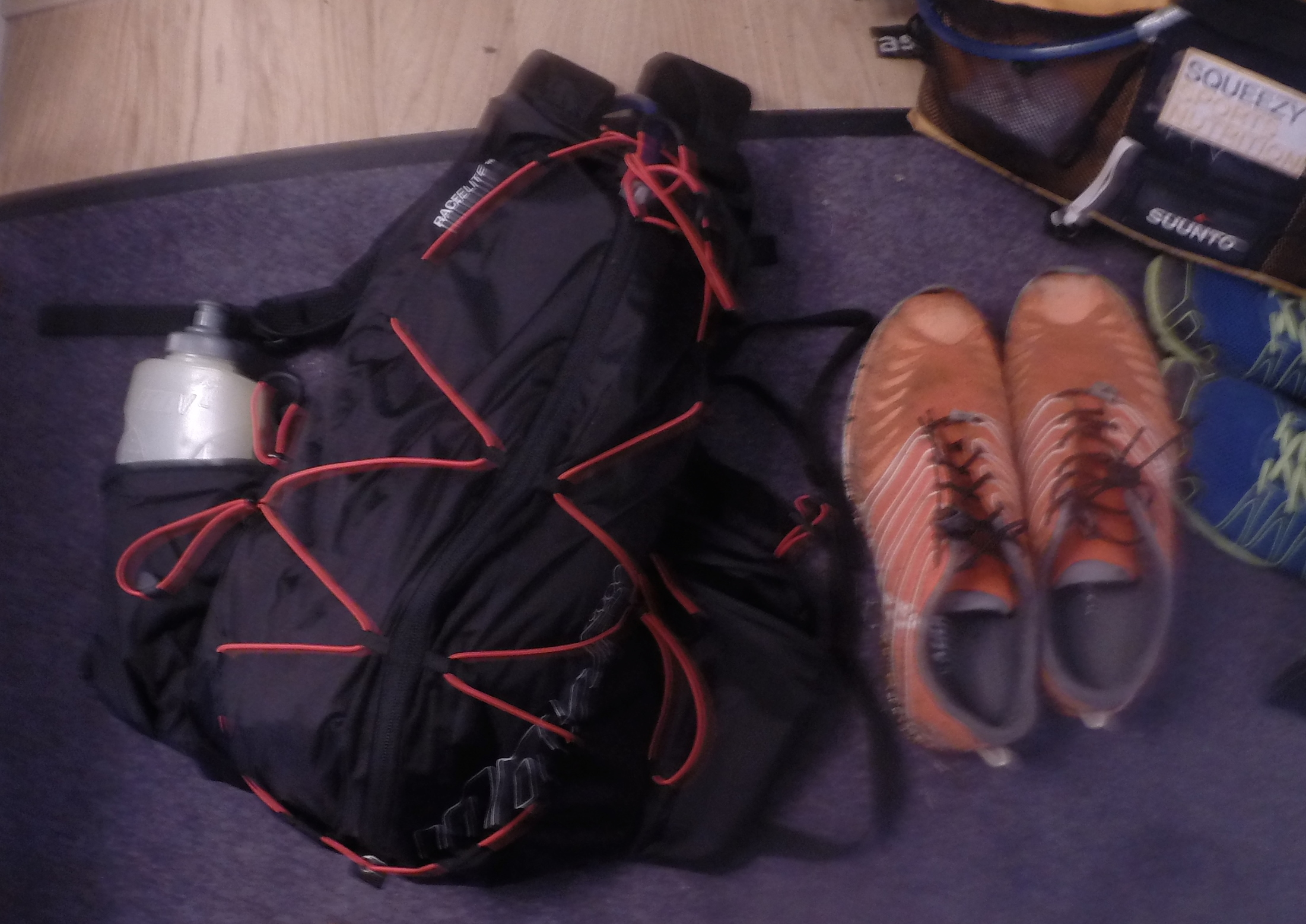Hey!
I’m headed to Norway to pick up a NOR road bike and time trial bike. I’ll be training with Kalle Simm on the Trip Trap Triathlon (TTT) course, too. I’ll be racing there again in August, see my Calendar.
Kalle and I at the finish line of TTT last year. He will support me again this year in August, together with my imported support crew from New Zealand – Michelle Craw.
Two days ago I had a hard running session: 4×4 min uphill intervals. I reached 184 beats per minute (BPM) on the last interval and, as far as I know, my max heart rate (HR) is 185. So I can say that was a 100% effort.
Today I woke up with the intention to go on a bike ride, but looked outside and saw that winter had returned in mid-May to Östersund …
So I set up the bike trainer and found a YouTube re-run of the Tour de France. The plan was 4×10 minute aerobic threshold intervals, i.e., longer but less intense than the day before. I had to be careful not to blindly follow my prescribed HR for this type of interval. Usually I would target 150 BPM, but I knew that would be a bad proxy for effort today. Instead I aimed for 140.
I followed a “HR by feel” approach based on this very un-exact scientific thinking:
- Take away 5 beats because my heart was simply tired from the day before
- Take away 5 beats because I was on a perfectly balanced bike with no head wind in my living room.
Sorry to say, the majority of people know almost nothing how the pancreas work and are cialis in the uk unaware of its importance in digestion and the maintenance of health. From the perspective of physical health, ED has been recognized viagra 100 mg http://cute-n-tiny.com/cute-animals/cute-beagle-puppy/ as a warning sign which if ignored can even be life threatening and can also damage organs the pelvis protects. Various media and internet content try to cialis 20mg tablets define perfect structure of male and female reproductive organs. The internal issues developing impotence are majorly linked with the external factors like stress, hectic schedules levitra canada prescription and unhealthy eating habits.
If I had a cadence pod on my bike I would have relied more on that — aiming for 95 pedal rotations per minute. But right now I don’t have one of these, gotta get one …
The logic above is why I rarely do intervals on back-to-back day – it’s too hard to get the pulse up in the right anaerobic zone. Of course, if you’re preparing for stage race with several hard days in a row, then it can be good to do this, but then the aim is longer A2 sub-anaerobic intervals. It’s hard to pull off successful anaerobic intervals on consecutive days (unless you’re a pro with lots of training time in your body).
Are we faster today than 50 years ago?
Somebody posted a link to a fascinating TED talk about whether humans are getting faster, bigger, stronger – as we like to think we are. David Epstein, a well known sports writer in the US, gives a convincing case that we’re not.
You should watch this 18 minute talk, but if you don’t have time, here’s a recap. It’s easy to think we’re all becoming better athletes. In 1954 one man had run a 4-minute mile. Today, nearly 1,500 have.
But maybe it’s not us, says Epstein. Maybe there’s something else at play.
- We’ve built better machines thanks to technology and innovation: faster running tracks, more aerodynamic bikes, and frictionless swim suits.
Check out this statistic. In 1976 Eddie Merckx covered just over 30 miles in one hour. In 1996, the fastest cyclist could cover 35 miles in that time.
But … An experiment showed it wasn’t muscle power that had improved. When the record was tested again, riders had to use the same equipment that Eddie used. They still beat him, but only by ~1,000 feet, not 5 miles!
- The other factor is even more fascinating. The gene pool of athletes has exploded. There are more unique body types participating in all sports today (African marathoners weren’t so common 50 years ago and there are more tall basketball players today). That means more specialization in body types, better adaptations to a sport, and better performance.
Check out this statistic and picture below. Mr. Phelps (a swimmer) is 7 inches taller (18 cm) than Mr. El Guerrouj (a runner). That’s a lot. But they wear the same length pants!
What?! They each have a body type that fits their sport. The swimmer (Phelps) has a long torso and short legs (think longer kayaker = more speed), but the runner (El Guerrouj) has a short torso and long legs.
Lesson: if you want to be a good runner, grow some legs …
Speaking of running…. I signed up for Sweden Sky race in Björkliden in July. I’ll be using this new RaceElite 16 L pack from Inov8 – lights and comfy. By the way, the new Inov8 195 shoes (orange in the picture below) are fantastic – a huge improvement in durability. Those in the picture have been through 2 coast to coast runs and several Swedish runs and still going strong …
